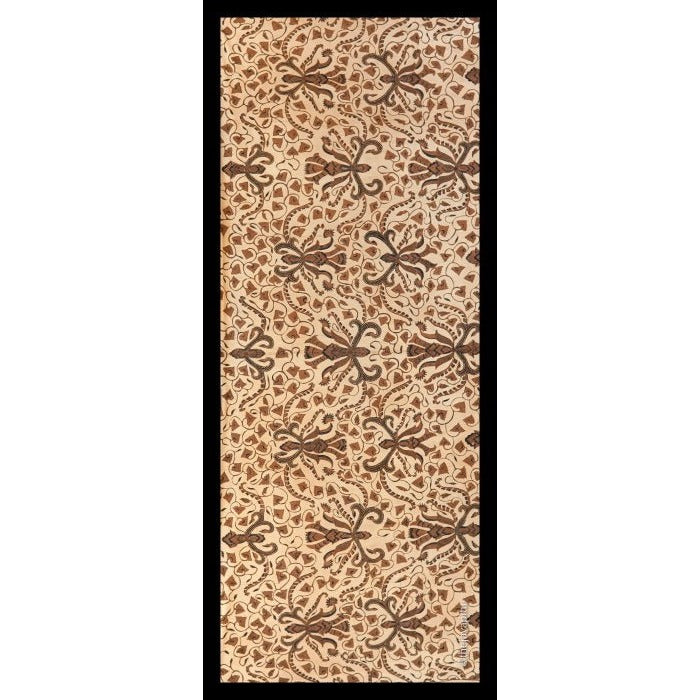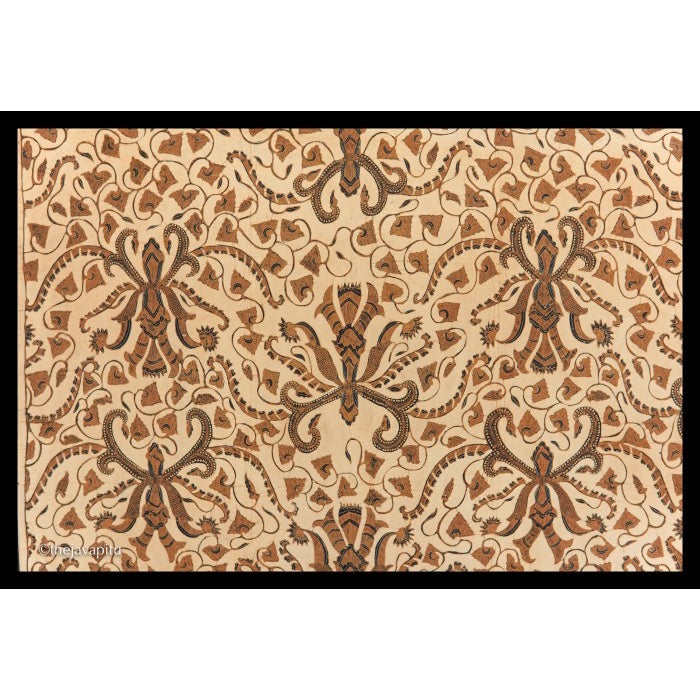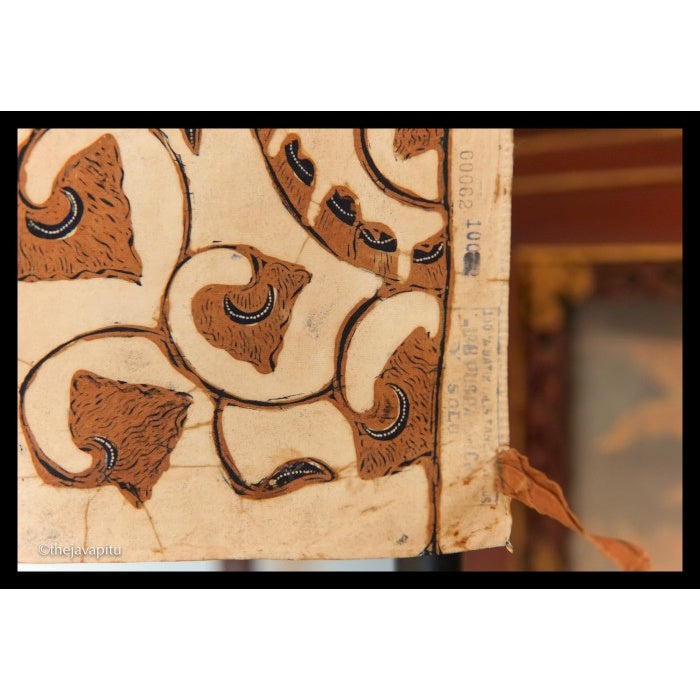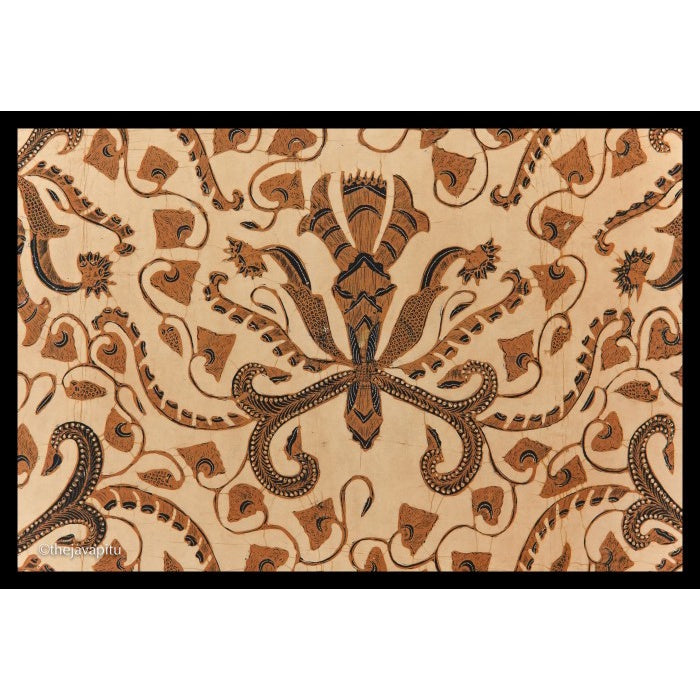Javapitu
1950s Tulis Batik wax resist " PISAN BALI " Kain Panjang Ibu Pupsaningrat
1950s Tulis Batik wax resist " PISAN BALI " Kain Panjang Ibu Pupsaningrat
Regular price
Rp 2,199,000.00 IDR
Regular price
Rp 3,141,428.00 IDR
Sale price
Rp 2,199,000.00 IDR
Unit price
per
Couldn't load pickup availability
This 1950s Tulis Batik wax resist, signed PISAN BALI, Kain Panjang, was crafted by Original IBU PUSPANIGRAT of Surakarta,Java. Boasting a premium quality, the main motif is Pisan Bali, which dates back to the 9th century and symbolizes a lover's travel far and a prayer of noble intentions. The backdrop is plain yellowish white (Bledak), and the color is created with natural dye. The size is 260 x 105 cm, making it the perfect size for a skirt cloth.
1950s Signed Tulis Batik wax resist PISANBALI, Kain Panjang, Skirt cloth. Signed on the edge of
the fabric
Workshop of Original IBU PUSPANIGRAT in Surakarta,Java, Premium quality
Main pattern: Pisan Bali
Identified decoration pattern : Plain background
,yellowish white color ( Bledak )
Color: Natural Dye
Size: 260 x 105 cm
Pisan Bali Motif Found in the 9th century on the reliefs
of a temple in Central Java,
The meaning of the motif is given to a
lover who travels far with the intention that he will
come back again, also symbolizing Prayer and Noble.
This design has a good meaning in Javanese cultural
beliefs,
Once upon a time some motifs could only be worn by
the Surakarta royal family, and citizens had to be
submissive and obedient.
The Javapitu collections
Condition : Perfect, Collectible Item, This cloth is well maintained
Guarantee 100% Authentic antique batik curated by Thejavapitu, Has a selected and exclusive collection of batik from several regions in Indonesia.
Original batik is made using canting and wax (real honeycomb) which is melted with other materials as a color barrier. and this is called " Batik Tulis " / Hand Drawn batik,
And still undergoing a complicated process from processing raw materials / plain cotton fabric into a BATIK.
If batik is made using a copper mold (usually made of copper) we call it " BATIK CAP " / Stamped batik.
Can shorten the time of manufacture and reduce the cost of batik production, but this clearly affects the value of its art, because it produces repetitive batik patterns, monotonous patterns and tends to be made as a mass product.









